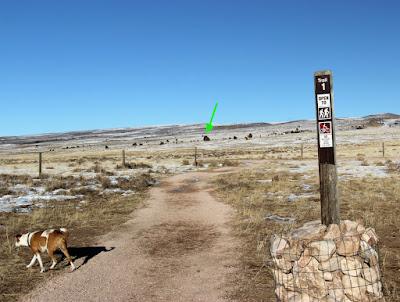
Arrow points to our destination—a Rocky Mountain Juniper
Every year about this time, we tree followers are out searching for a new tree. Unfamiliar with tree following? This is how I explained it in 2014, the year I joined the group, when I followed a cottonwood not far from my house:"The idea is not to chase a tree around, obviously that’s not necessary, but rather to visit a specific tree occasionally to see what’s going on in its life—as an 'interested neighbor' as Lucy [Corrander] says."
Since then I've followed a willow, boxelder, limber pine, juneberry, hawthorne, chokecherry, maple, balsam poplar, and even an extinct palm tree (that didn't work out so well). After all these years and trees, I'm still at it. Seems I always learn something, often something interesting or unexpected.
I've learned that for me it's best to choose a tree that's easily accessible, and even better, in a place I enjoy. Deciduous trees are preferable to evergreens (= conifers here) because they change more through the year. But it's getting hard to come up with a new species. Laramie, Wyoming is 7200 feet above sea level, semi-arid (12" annual precipitation), and far from any moderating coastal influence. Tree diversity is limited.
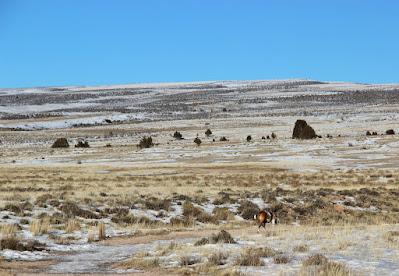
Foothills of Laramie Mountains on horizon.

But which is the 1 less traveled?
To reach the juniper, we left Trail 1 and traveled cross-country—quite easy on the slabby limestone, even with snow.
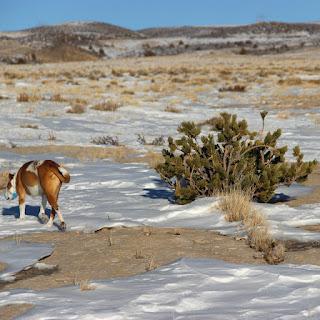
Shrub-like limber pine, Pinus flexilis.

We've arrived.
There was an 'archeological site' at the base of the tree on the east side, where it was protected from the wind.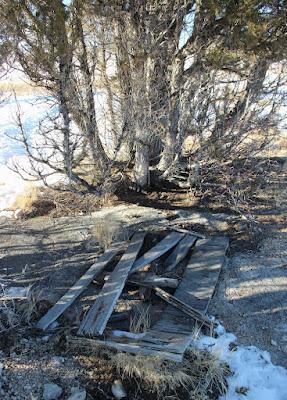
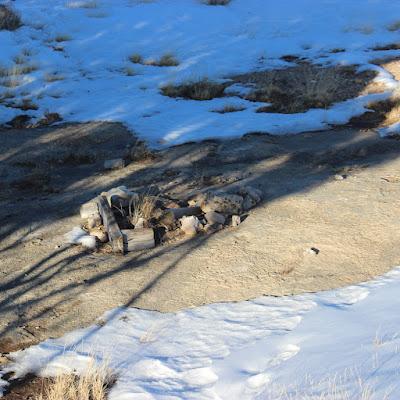 Obviously I didn't follow all my tree-selection rules; junipers are evergreen. And this one probably grows only a tiny bit each year given the habitat (rock). If I were to visit only the tree, there wouldn't be much to report each month. But I think its neighborhood will make up for that. What looks like nothing but bare rock is actually acceptable habitat for the right plants. Small tough xerophytic perennials somehow established themselves and now thrive in crevices, cavities, little patches of gravel, etc. When the days warm, these limestone slabs will become rock gardens, with spots of color scattered about (fingers crossed for decent rains this year).
Obviously I didn't follow all my tree-selection rules; junipers are evergreen. And this one probably grows only a tiny bit each year given the habitat (rock). If I were to visit only the tree, there wouldn't be much to report each month. But I think its neighborhood will make up for that. What looks like nothing but bare rock is actually acceptable habitat for the right plants. Small tough xerophytic perennials somehow established themselves and now thrive in crevices, cavities, little patches of gravel, etc. When the days warm, these limestone slabs will become rock gardens, with spots of color scattered about (fingers crossed for decent rains this year).Hints of things to come:
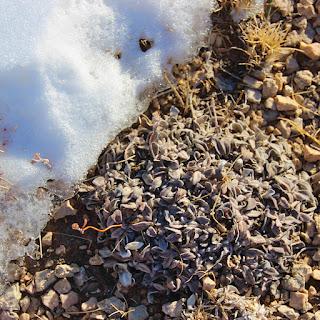
Wild buckwheat. Cushion growth form is common here.
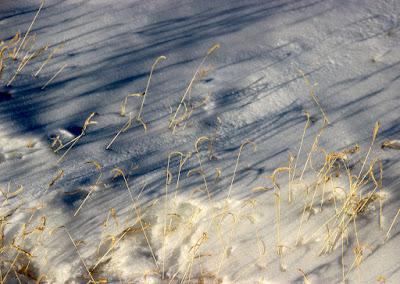
Blue grama is one of the dominant grasses where there's some soil.

Prickly pear, Opuntia polyacantha. How do succulents survive the arctic air that visits us in winter?
In checking the tree from various sides, I discovered it was a pair! No need to choose—I will follow both.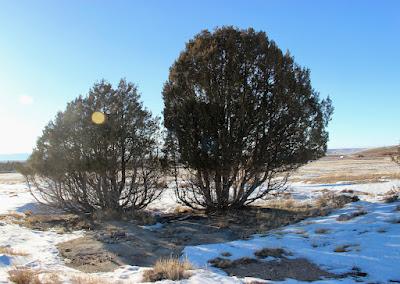

My new friends in the golden light before sunset.
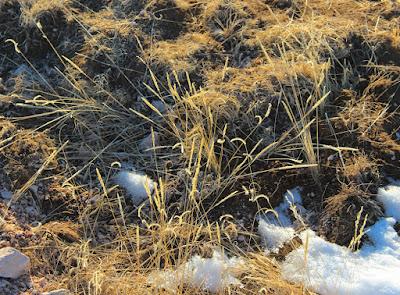
Blue grama and junegrass backlit by the low sun.
 This is my monthly contribution to the virtual gathering of tree followers kindly hosted by The Squirrelbasket. Want to join in the fun? It's easy and no there's no pressure :) More information here. And click on the Linky box for the latest news.
This is my monthly contribution to the virtual gathering of tree followers kindly hosted by The Squirrelbasket. Want to join in the fun? It's easy and no there's no pressure :) More information here. And click on the Linky box for the latest news.